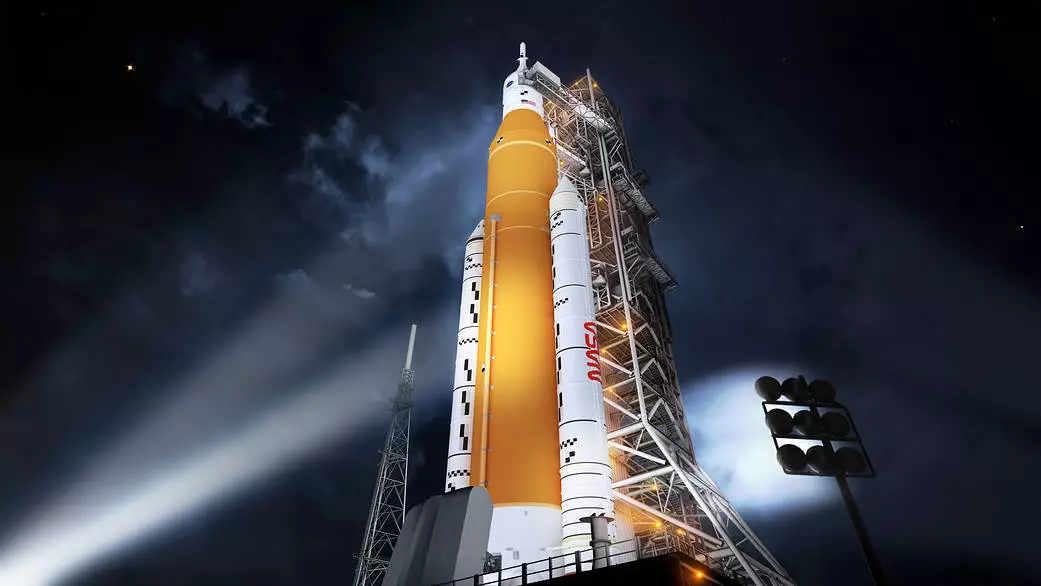After wrapping up testing of its next-generation Space Launch System (SLS) last month, NASA has now announced a series of launch windows in which it could take off for the first time. This uncrewed demo flight could come as soon as next month if things run smoothly, though the agency also lists a series of subsequent launch windows for later in the year.
The SLS is the most powerful rocket NASA has ever built and is designed to fire its Orion capsule towards the Moon. After more than a decade of development and testing, the rocket and spacecraft were rolled out to the launchpad for the first time in March, in preparation for what's known as a wet dress rehearsal.
This involves filling the tanks with cryogenic propellant and conducting a practice run of the entire countdown. Leaks and faulty valves set this program back and extinguished hopes for a May launch, but in late June the NASA team was finally satisfied that the necessary boxes were ticked (though some repairs were in order to address a newly discovered leak issue).
Which brings us to the launch of Artemis 1, the first in NASA's Artemis program designed to return astronauts to the Moon. This will send an uncrewed Orion capsule on an orbit beyond the Moon, and the agency had previously hinted that this could lift off in August. Jim Free, associate administrator of Exploration Systems Development Mission Directorate at NASA Headquarters, expanded on this in a media briefing today.
"We have placeholders on the range for August 29, September 2, September 5," Free told reporters. "We have a schedule that gets us aligned with those dates, with what we know today and what we know about the repairs we've done since we came back from wet dress, which we consider successful."
Free went on to explain that these dates aren't an agency commitment, which will come after a flight readiness review a little over a week before launch. But these are dates the team is working toward. If things don't got to plan, the agency has outlined a number of launch windows for later in the year, which roughly fall into a pattern of two weeks on, two weeks off.
These launch windows must be timed with the Moon's position in its lunar cycle in order to maximize chances of a successful entry to orbit. Among the other considerations is the availability of solar power to keep the spacecraft in an optimal temperature range, meaning Orion can't remain in darkness for more than 90 minutes at a time. Further, the return of Orion to Earth must allow for a daytime splashdown to assist recovery procedures.
Following the initial dates slated by Free today, another launch window is listed for September 19 to October 4, and then another from October 17 to 31.
You can hear the full media briefing from today below.
Source: NASA




